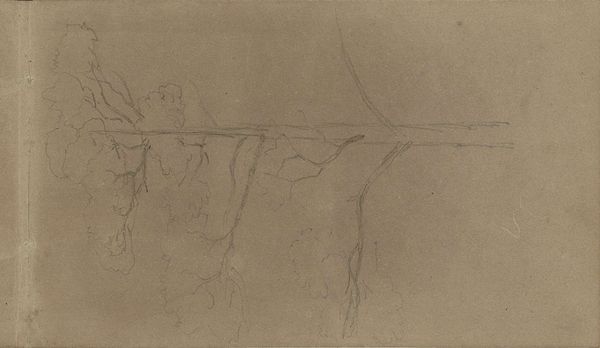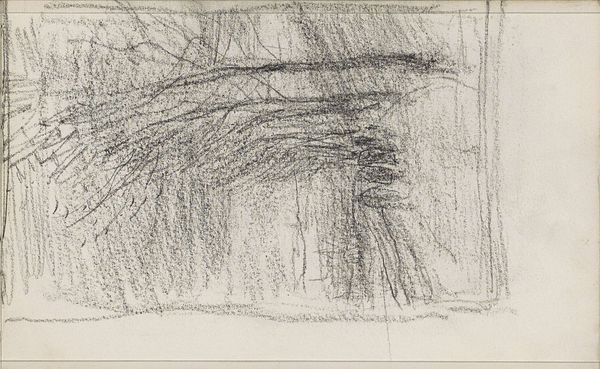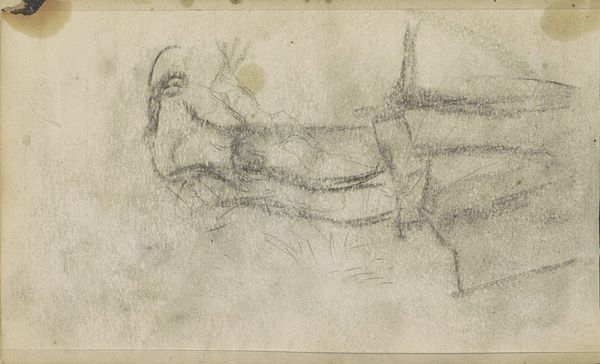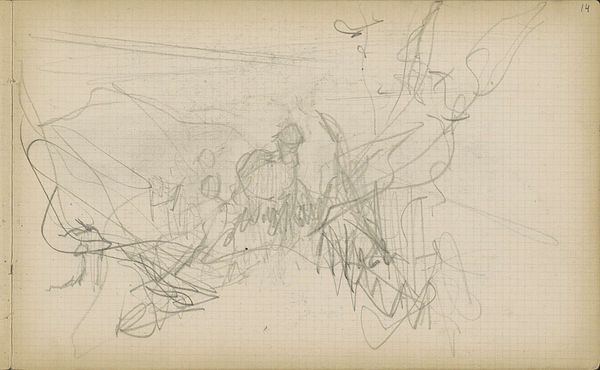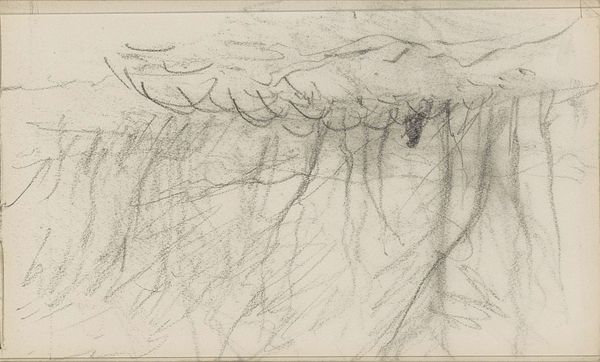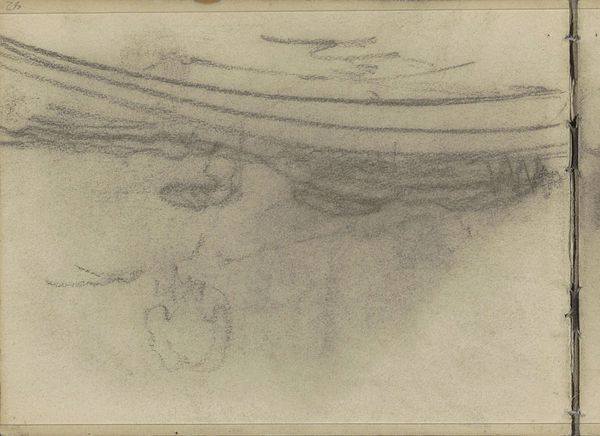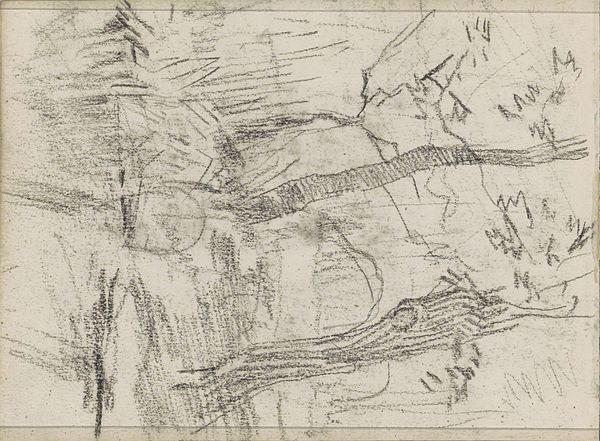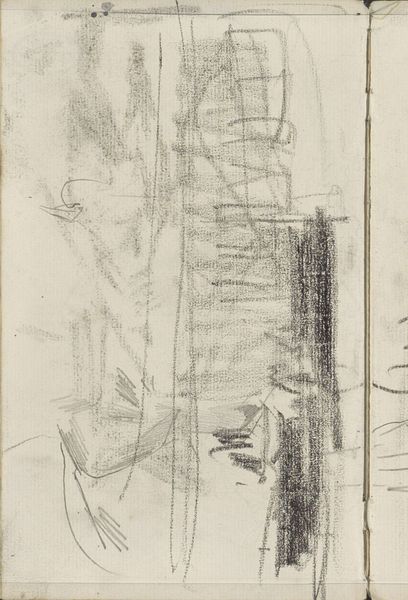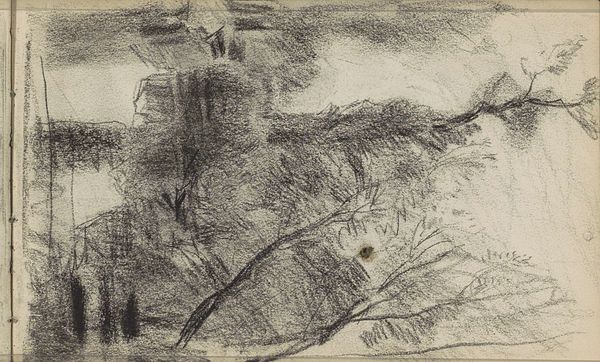
drawing, pencil, graphite
#
drawing
#
impressionism
#
pencil sketch
#
landscape
#
road
#
pencil
#
graphite
#
realism
Copyright: Rijks Museum: Open Domain
Editor: This is “Trees along a Road by a Waterside,” a graphite and pencil drawing made around 1873 by Johannes Bosboom. It looks like a quick sketch; what strikes me is the contrast between the roughly shaded trees and the more defined vertical lines on the left side of the image. What do you see in this piece? Curator: Formally, the dynamism stems from Bosboom’s juxtaposition of textures and weights of line. Note the almost frenetic energy in the foliage contrasted against the smoother planes suggesting sky or water. Semiotically, we can consider these differing visual elements to form binary oppositions, a foundational element in structuralist art analysis. Editor: So the contrast in textures creates meaning? Curator: Precisely. It isn't merely representational; it is fundamentally about the relationship between mark and space, shadow and light, the perceived "wildness" of nature versus implied human order. Observe the compositional choices--the roughly centered composition keeps your eye moving within the frame and enhances the balance in the drawing. Editor: I can see how the repetition of lines creates a sort of rhythm across the paper. Is it that rhythm you’re referring to? Curator: Indeed. Consider the negative space, not as absence, but as a critical element contributing to the work's visual structure. Where does the light appear to be coming from? What shapes are outlined from the dark shading? Editor: Thinking about light and dark and those relationships does invite you to pause and study the image more closely. Curator: Precisely, through meticulous observation, the artwork presents itself, revealing its internal structure. A wonderful experience!
Comments
No comments
Be the first to comment and join the conversation on the ultimate creative platform.
